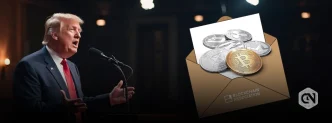Solana is a blockchain platform that enables decentralized, scalable applications. It’s an open-source project that started in 2017. Solana uses a blend of proof-of-history and authorized proof-of-stake protocols. Solana’s distinctive combination of proof of history and delegated proof of stake allows for considerably faster transaction rates. The Solana chain’s blocks are defined using timestamps as proof of history. This unique technique allows blockchain validators to vote on the timestamps of individual blocks on the chain. This helps maintain the chain reasonably decentralized while allowing for more safe and faster processing.
Unveiling the Distribution Strategy
- Seed Sale & Private Sale: The purpose of the seed sale and private sale is to generate start-up capital for ecosystem expansion and project development. Typically, these sales are directed towards early adopters eager to support the project from the start and strategic investors. The project’s objectives and demands will determine the percentages allotted to ecosystem development and early investors. Nonetheless, early investors, like seed investors and buyers in private sales, can receive 20–30% of the overall token supply. This distribution rewards early backers and a share in the project’s success. Another 10–20% of the token supply may be set aside for ecosystem expansion. It covers things like collaborations, fostering a sense of community, etc. This distribution aids in the ecosystem’s bootstrapping.
- Team & Foundation Allocation: To incentivize the core team members, a portion of the allocation is set aside for the team and foundation. It also supports long-term development projects. The team may devote time and funds to the project’s development and is assured a stake in its success with this allocation. The team and foundation will typically receive 15–25 percent of the overall token supply. To align the team’s interests with the project’s long-term goals and prevent token dumping, this allocation is typically invested gradually over time.
- Ecosystem & Developer Grants: Grants from ecosystems and developers are necessary to create a lively and prosperous community around the project. These awards are intended to encourage developers to create tools and applications on the platform, conduct research, and support the expansion of the ecosystem. It is possible to allocate SOL tokens in a flexible and community-driven manner for ecosystem and developer grants. These grants may get a part of the overall token supply, usually between 10% and 20%. The grants can be awarded through several schemes that guarantee openness and community participation in the selection procedure.
Deep Dive into Specific Distribution Channels
- Staking Rewards: Users who want to receive incentives for staking must lock up their SOL tokens in a wallet. Its purpose is to support the security and functionality of the network. Users gain prizes in exchange for their staking. These incentives typically take the shape of extra SOL tokens. Tokens are usually delegated to a validator, who incorporates them into the network’s consensus mechanism and receives rewards on the delegator’s behalf.
- Faucets: A cryptocurrency faucet refers to an application or website that offers tiny amounts of cryptocurrency as payment for accomplishing simple activities. They are referred to as faucets because the benefits are small, much like the droplets of water that fall from a faulty faucet. Among other things, they promote adoption, attract new users, and test network functionality. Users can obtain small amounts of SOL tokens by completing simple tasks like filling out surveys and solving captchas on Solana faucet sites. You may test smart contracts, engage with decentralized apps, and discover more about the Solana ecosystem with these currencies. While faucet distributions are typically tiny, they can be quite beneficial in acclimating new users to the system and promoting early involvement.
- Community Programs & Airdrops: Initiatives like community programs and airdrops are meant to directly give SOL tokens to developers, community members, and other interested parties. These disbursements often try to encourage particular behaviors, such as participating in community forums and events, etc. Tokens are distributed for free to holders of existing tokens or to those who satisfy specific requirements, including being involved in community activities through airdrops. Airdrops and community programs effectively encourage community involvement and reward devoted users. Additionally, dispersing tokens to a larger audience increases the network’s reach. They can also support the fair and decentralized token distribution process, which aligns with the fundamentals of blockchain technology.
Final Thought
Advertisement
Advertisement
Solana’s distribution approach reflects its dedication to creating a healthy and long-lasting environment. Solana seeks to encourage development and promote adoption by carefully allocating tokens via various distribution mechanisms. It also seeks to create a vibrant user and development community. This all-encompassing strategy demonstrates Solana’s commitment to realizing its goal of enabling decentralized and efficient blockchain-based apps.







